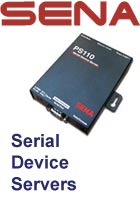Computers have evolved over time in terms of performance and capacity. Now that smart devices too have come into picture, there are huge amount of data lying everywhere that needs to be transferred between asynchronous devices. Security being the main concern for all data communication serial port not only provide secured data communication but enable fast transfer without any interruption.
These devices are connected via serial ports, USB cables, serial device server, terminal servers etc and data transfer across the Ethernet can happen quickly and also efficiently. Among the lot, these device servers enable one to connect any equipment with an RS232, RS422 or RS485 serial port to an Ethernet. It comes with lots of advantages and some of them are highlighted as below.
Read more at Blogspot.com.


